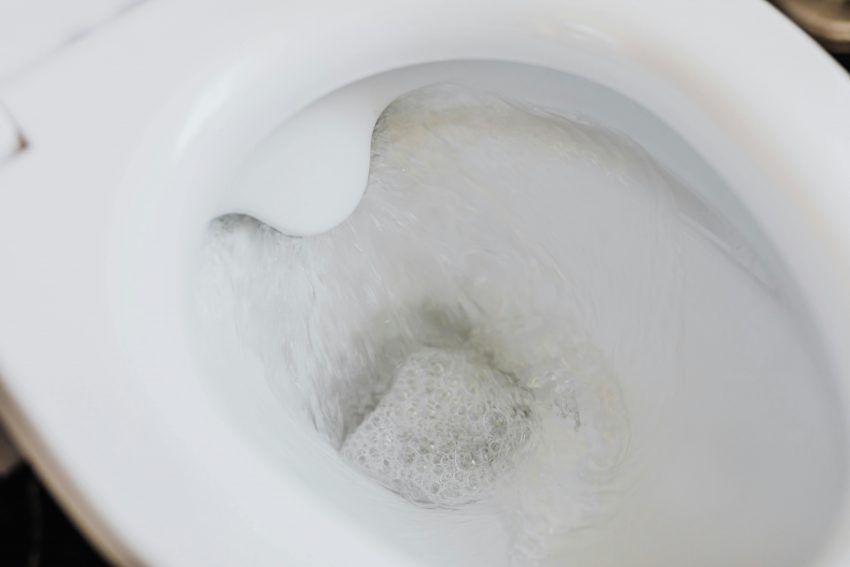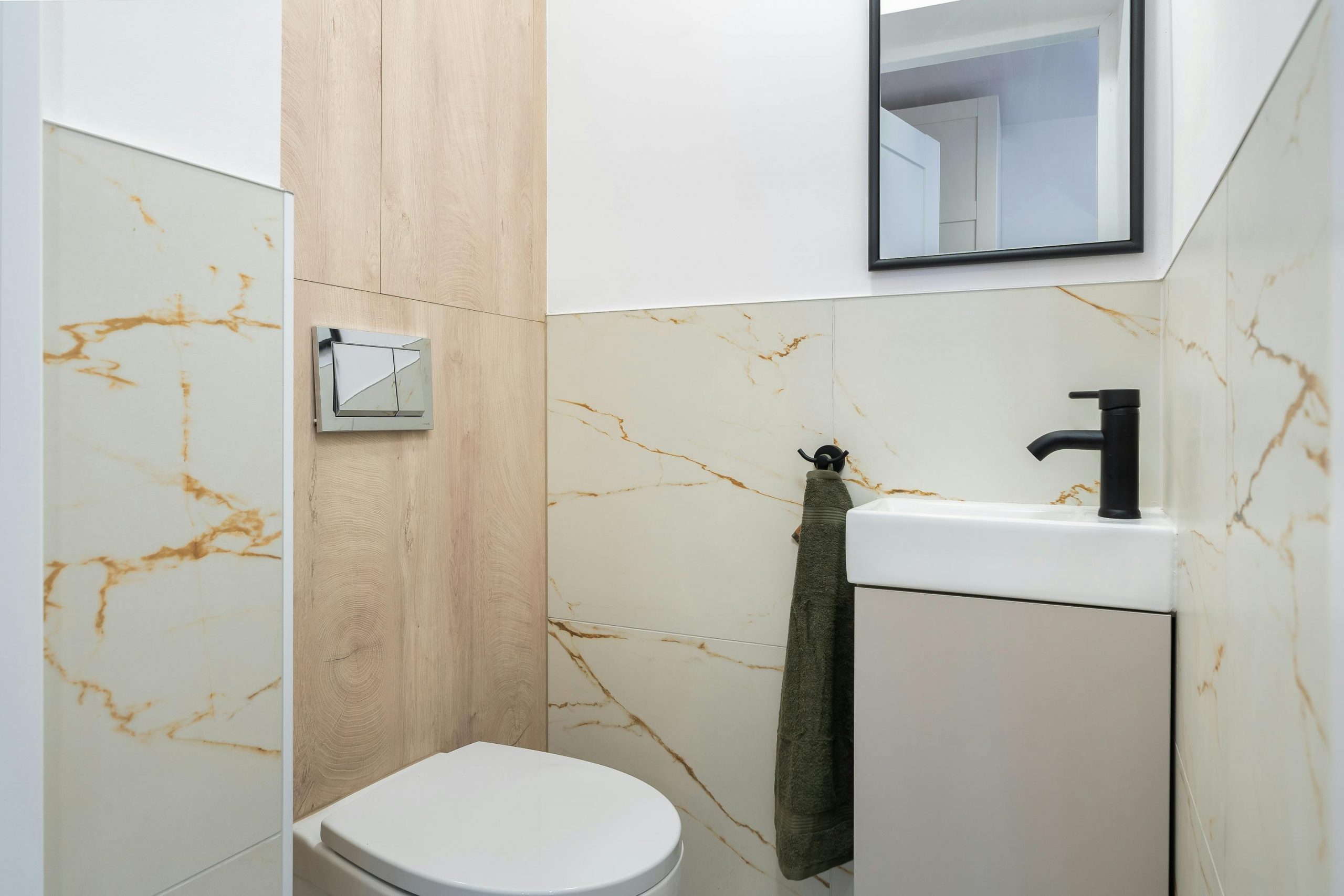
A toilet that doesn’t flush properly is more than just annoying—it can also lead to bigger plumbing problems if left unchecked. Whether your toilet barely flushes, flushes slowly, or doesn’t flush at all, there are a few common causes that are usually easy to fix. This guide will walk you through what might be wrong and how to solve it—all using simple language and tools most people have at home.
How a Toilet Flush Works (So You Know What to Check)
Understanding how your toilet works can make it easier to figure out why it isn’t flushing properly. While it may seem like a simple system, several parts have to work together for a proper flush. If one part fails, the whole system can be affected.
Here’s what happens step-by-step when you press the toilet handle:
- Handle Activates the Flapper: When you press the handle, it pulls on a chain or lever inside the tank. This lifts the rubber flapper at the bottom of the tank.
- Water Flushes into the Bowl: With the flapper lifted, water from the tank rushes into the toilet bowl. This large surge of water helps push the waste and toilet paper through the trap and into the drainpipe.
- Flapper Drops Back Down: Once most of the water has exited the tank, the flapper falls back into place, sealing the tank so it can refill.
- Tank Refills: The fill valve opens, allowing water from the supply line to refill the tank. As the water level rises, the float moves up.
- Float Stops the Water: When the float reaches a certain level, it signals the fill valve to shut off, stopping the water flow.
If any part of this process is off—like a flapper that won’t seal, a stuck float, or a fill valve that doesn’t open—you may find your toilet flushing weakly or not at all. One of the most common issues is the toilet tank not filling properly, which prevents the bowl from getting enough water for a complete flush. By understanding each step, you can better identify what needs to be fixed.
Common Reasons a Toilet Won’t Flush Right
Let’s look at the most common causes and what they mean.
1. Weak Flush or Partial Flush
- Likely Cause: Low water level in the tank or a faulty flapper.
- Fix: Make sure the water level in the tank is about an inch below the overflow tube. If it’s too low, adjust the float or fill valve.
2. Toilet Tank Not Filling
- Likely Cause: A problem with the water supply, float, or fill valve.
- Fix: Check that the shut-off valve near the base of the toilet is fully open. Inspect the float mechanism and fill the valve for damage or blockage.
3. Clogged Toilet Bowl or Drain
- Likely Cause: Paper or other material blocking the drain.
- Fix: Use a plunger. For tougher clogs, a toilet auger (a long flexible tool) may be needed.
4. Chain Issues
- Likely Cause: The chain inside the tank is too loose or too tight.
- Fix: Adjust the length of the chain so it lifts the flapper easily but doesn’t pull it too high.
5. Cracked Flapper or Seal
- Likely Cause: The flapper is worn or not sealing properly.
- Fix: Turn off the water, drain the tank, and replace the flapper. These are inexpensive and easy to install.
Step-by-Step Fixes for Each Problem
Let’s walk through exactly what to do.
Fixing a Weak Flush
- Remove the tank lid.
- Check the water level. If it’s low, adjust the float by turning the screw or sliding the clip.
- Check the flapper for damage. If it’s loose or warped, replace it.
- Flush again to see if the power improves.
Fixing a Toilet Tank Not Filling
- Make sure the shut-off valve near the toilet is fully open.
- Check the float mechanism. Move it up and down to see if it’s stuck.
- Clean or replace the fill valve if water still won’t come in.
- If nothing works, the water supply line may be clogged and need replacement.
Fixing a Clogged Toilet
- Use a plunger. Place it over the hole in the bowl and push down firmly several times.
- If that doesn’t work, try a toilet auger. Feed it down the drain and twist to break up the clog.
- Avoid using chemical cleaners. They can damage pipes and the environment.
Extra Tips for Better Flushing
Even if your toilet flushes now, here are ways to keep it running well:
Regular Cleaning
Mineral buildup in the rim holes or jets under the bowl can block water flow.
- Clean the holes under the rim using an old toothbrush or a wire hanger.
- Pour white vinegar into the overflow tube to break down buildup.
Don’t Overload
Flushing too much toilet paper or non-flushable items can lead to clogs.
- Only flush toilet paper and human waste.
- Wipes, even those labeled flushable, can block pipes over time.
Replace Old Parts
If your toilet is older than 10 years, it may need new parts to work properly.
- Replacing the flapper, fill valve, and handle can cost less than $20.
- These small updates can improve flush power and save water.
When to Call a Plumber
Some problems are best handled by a professional:
- You hear constant water running but can’t find the cause.
- The bowl overflows often, even after plunging.
- There’s visible leaking around the base of the toilet.
- The toilet tank not filling happens even after replacing the valve and float.
If you’re unsure, it’s okay to ask for help. A plumber can usually fix most toilet issues quickly.
Summary: Quick Checklist
Here’s a fast recap of what to check when your toilet isn’t flushing:
✅ Check water level in the tank
✅ Make sure the tank is filling properly
✅ Test the flapper and chain
✅ Plunge or snake the drain if clogged
✅ Clean rim jets and overflow holes
✅ Replace worn-out parts as needed
Final Thoughts
A toilet not flushing properly is a common problem—but one that’s usually easy to fix. By learning how your toilet works and checking a few key parts, you can often solve the issue without needing a plumber.
Remember to check if the toilet tank not filling is part of the problem. That one fix alone could solve weak flushes, no flushes, or slow refills.
With a little time, patience, and this guide, you can get your toilet back in perfect working order.


